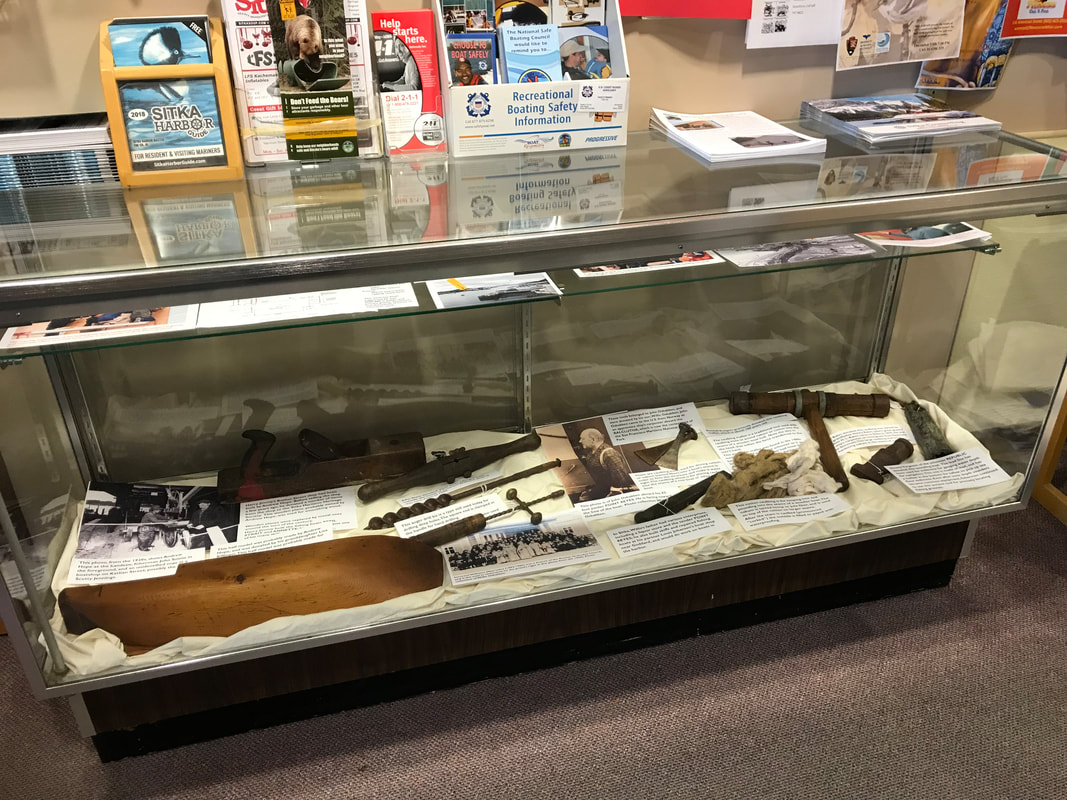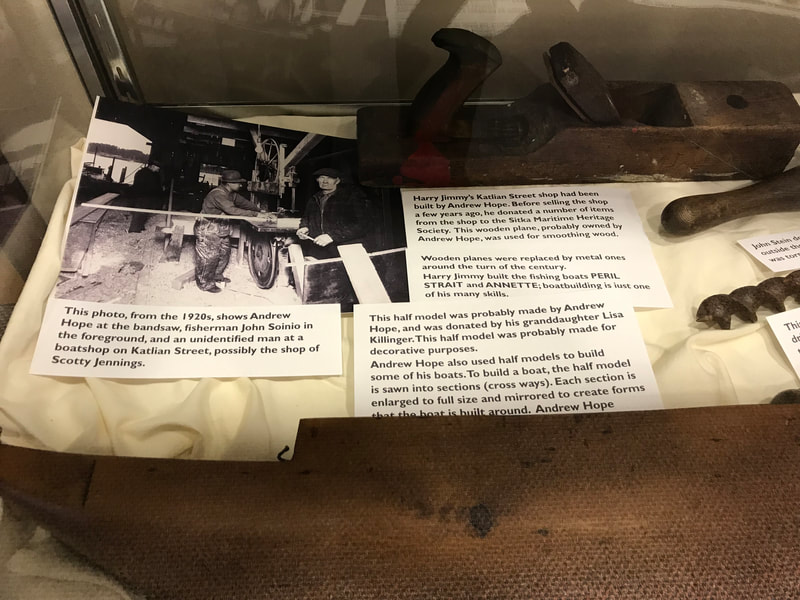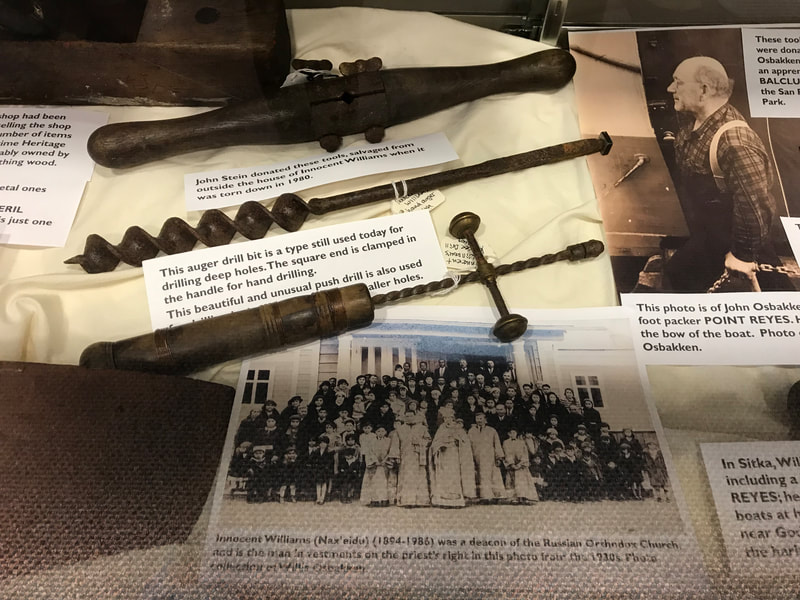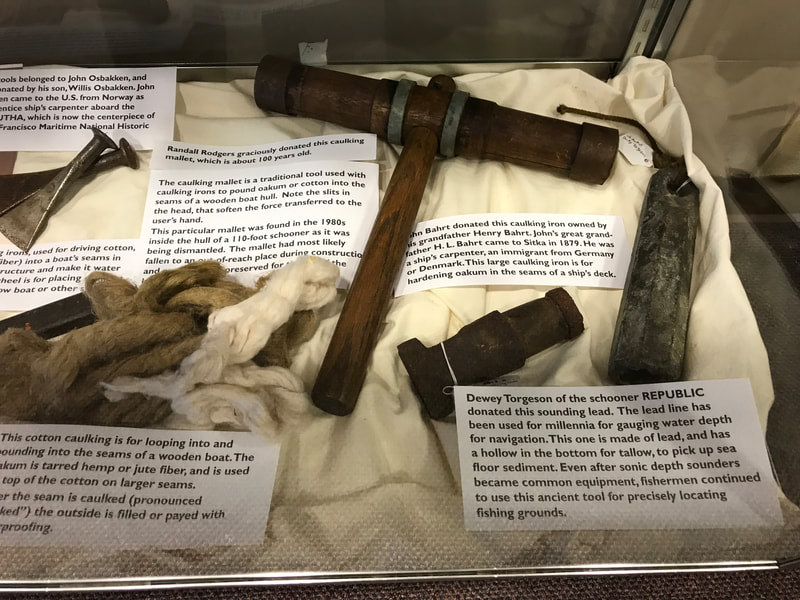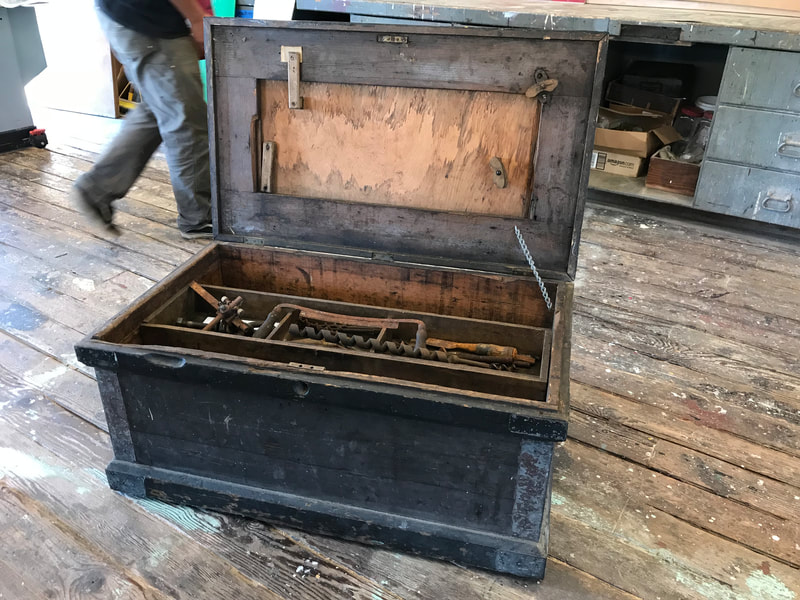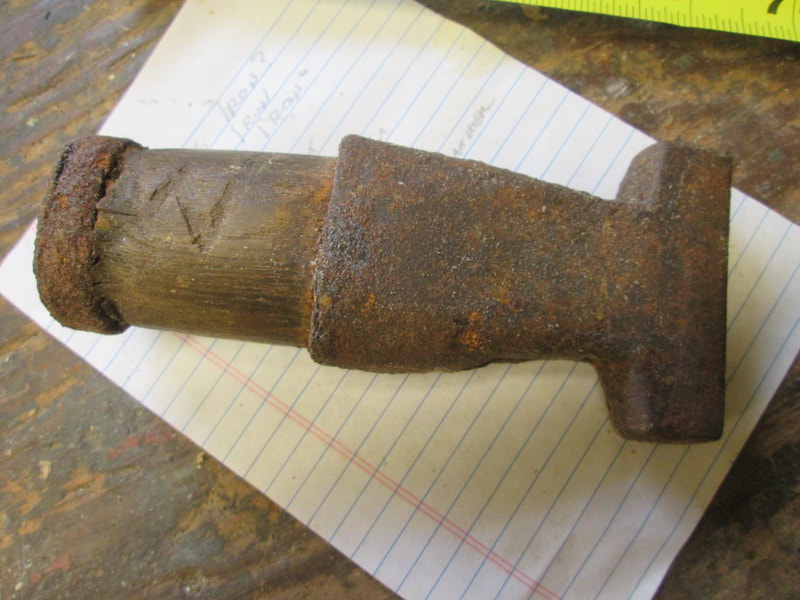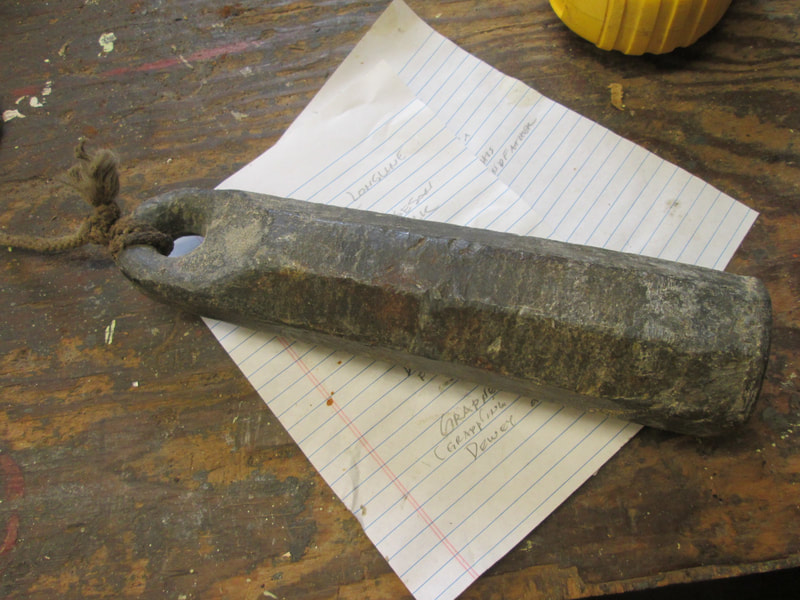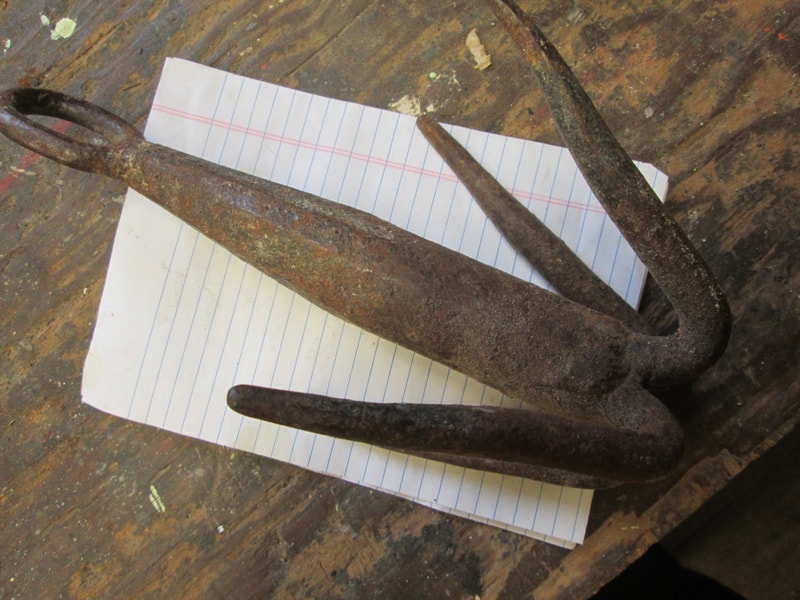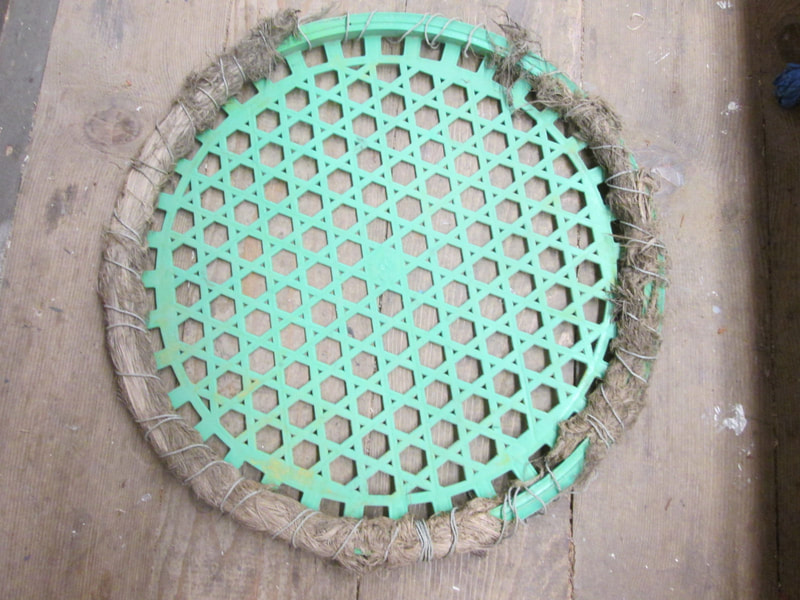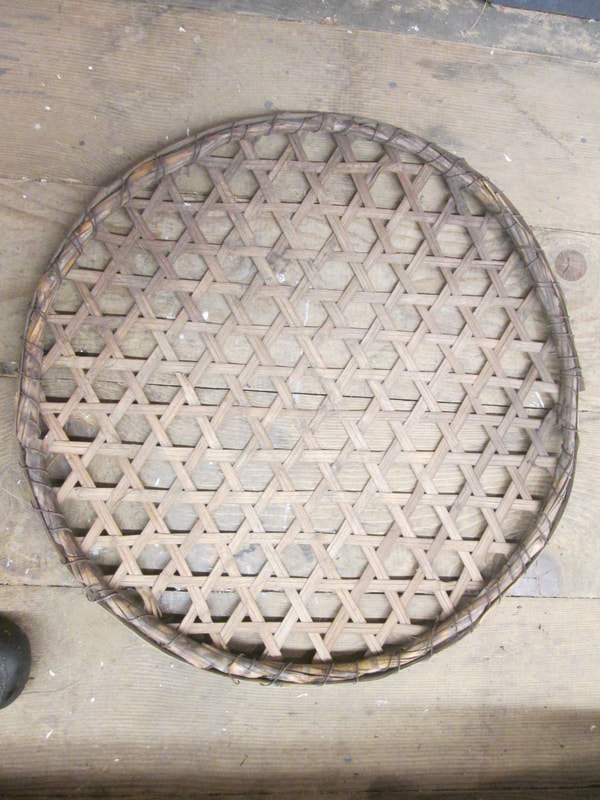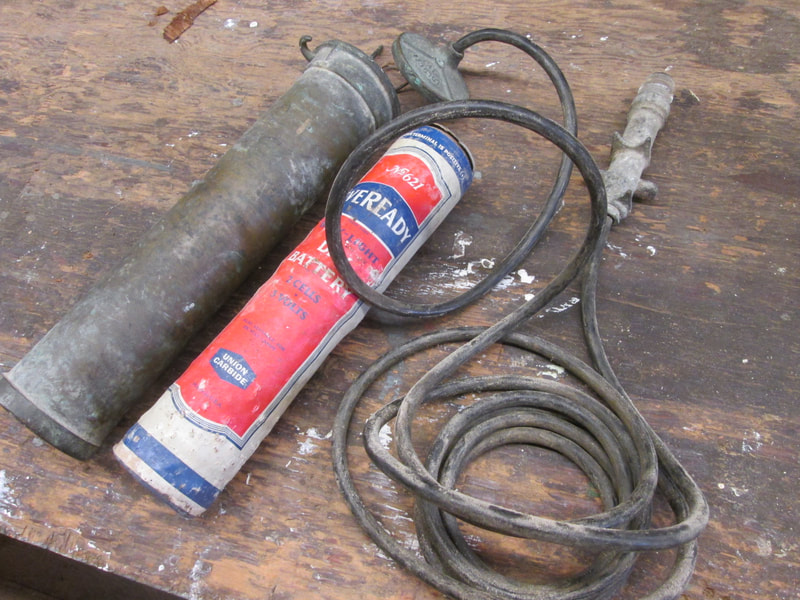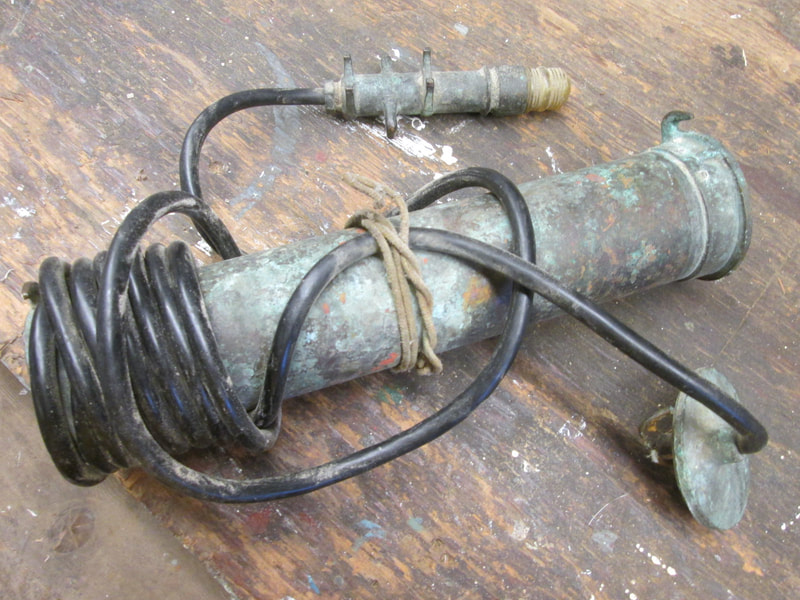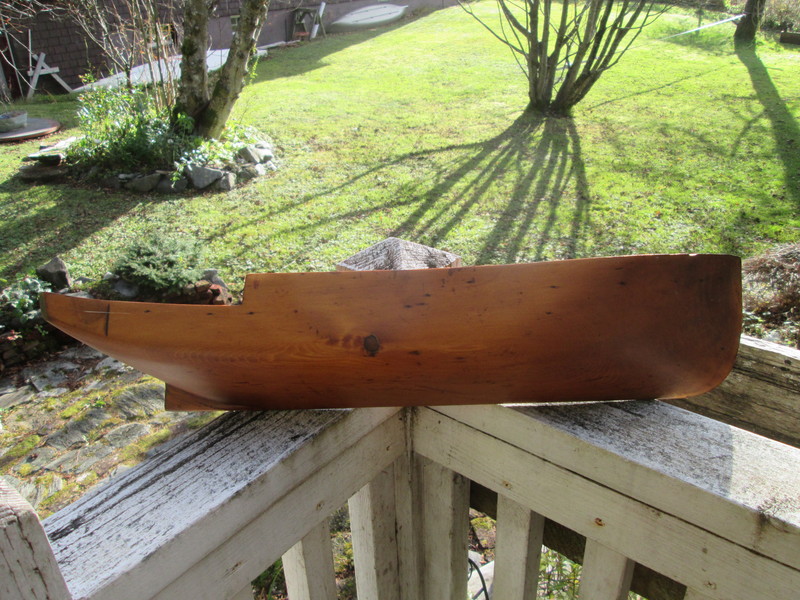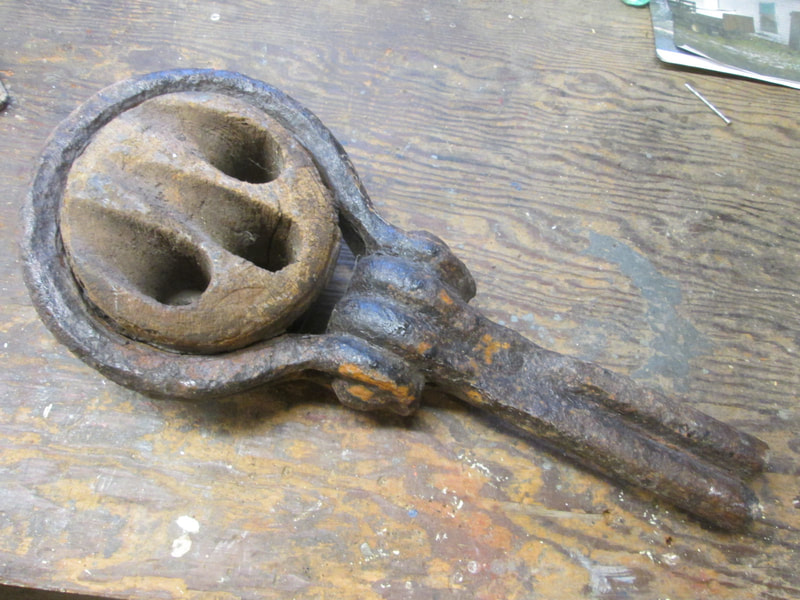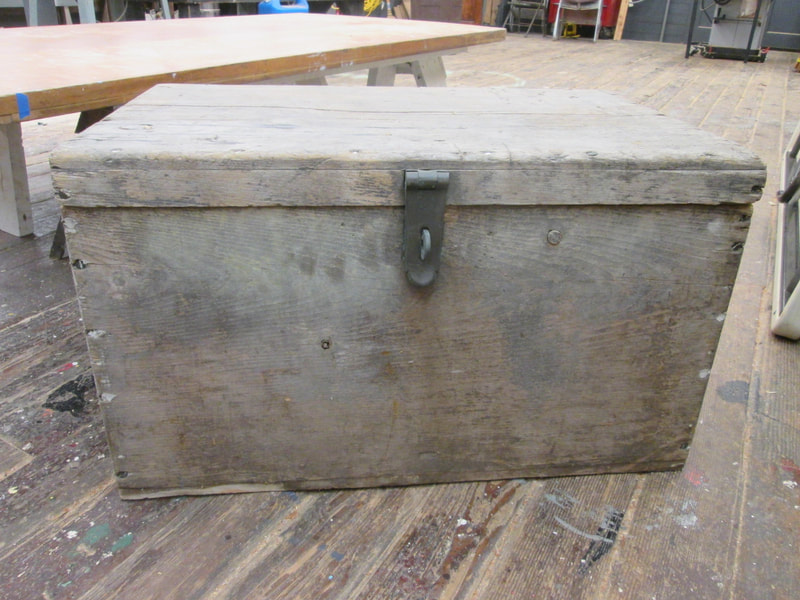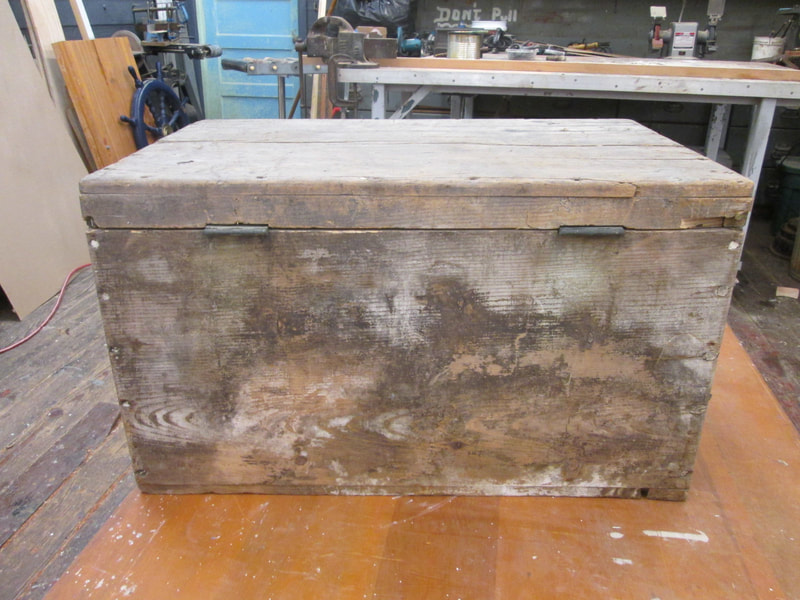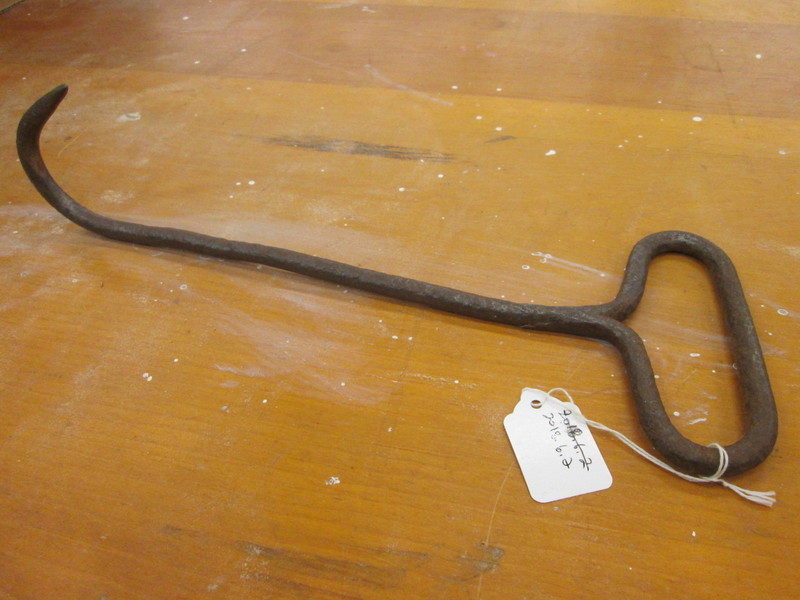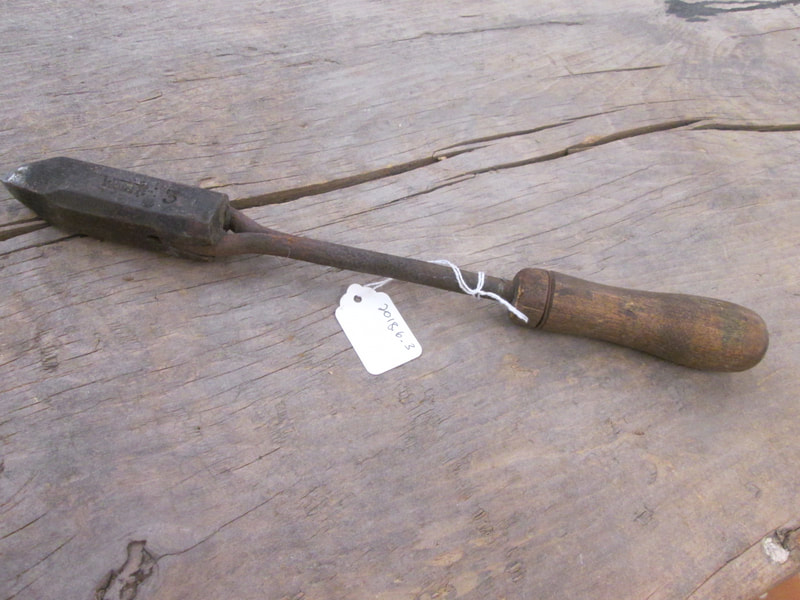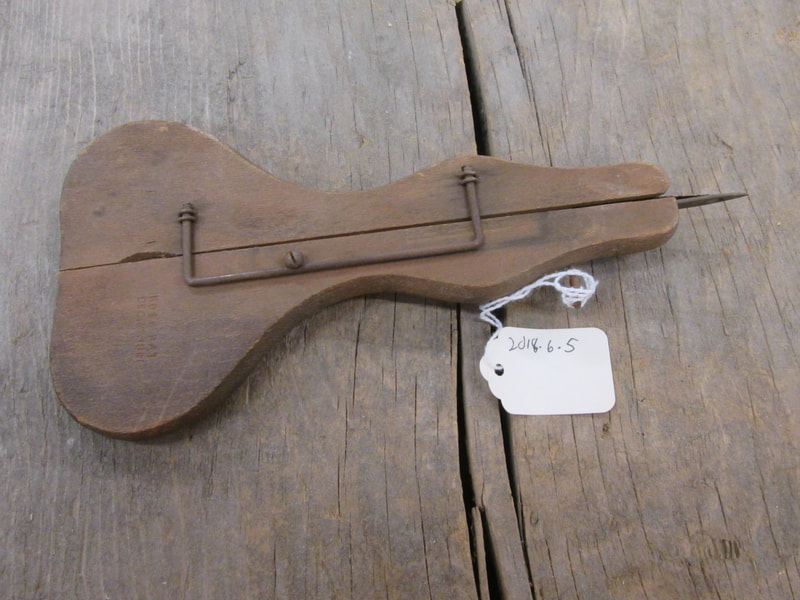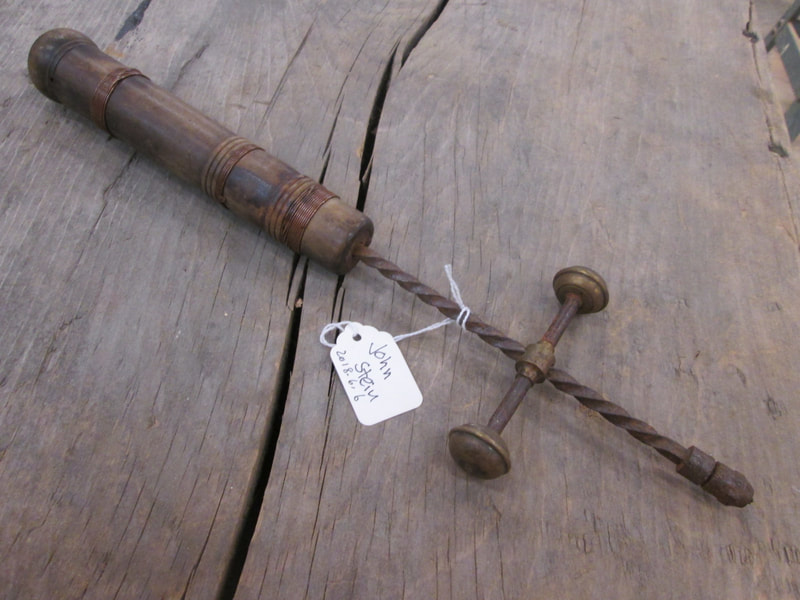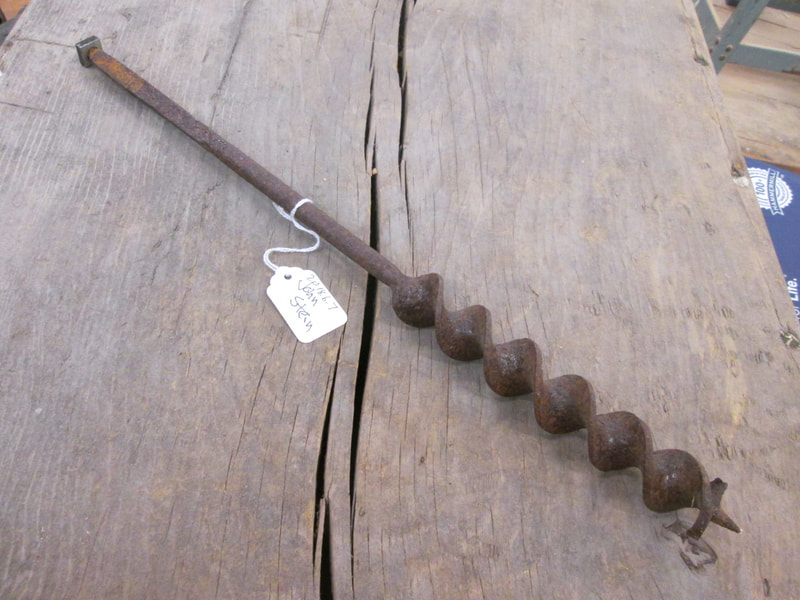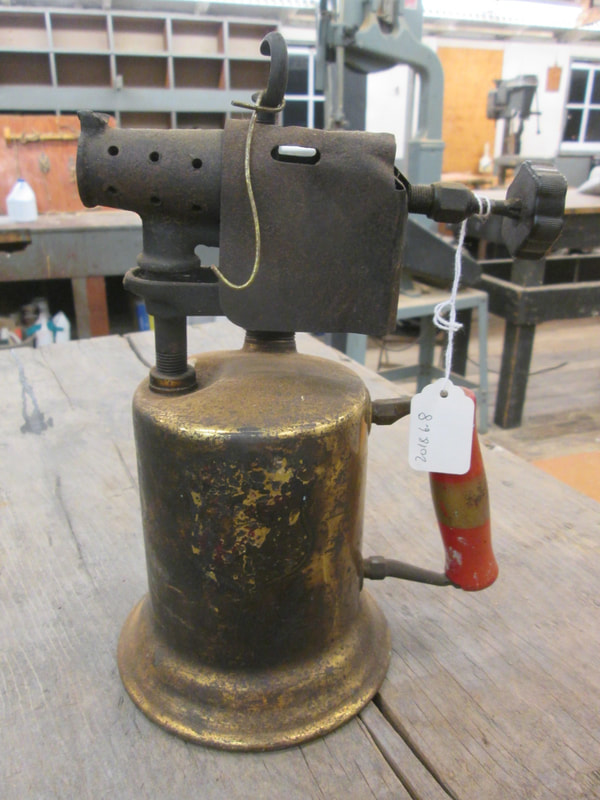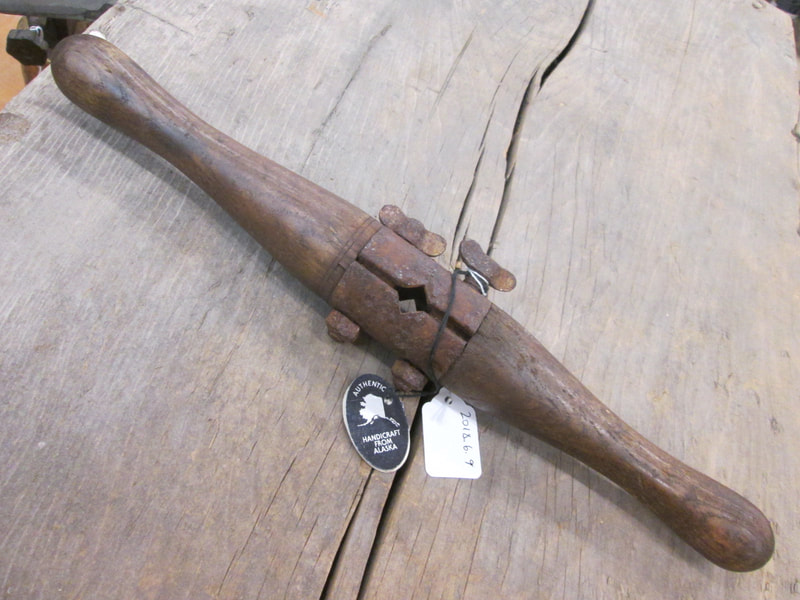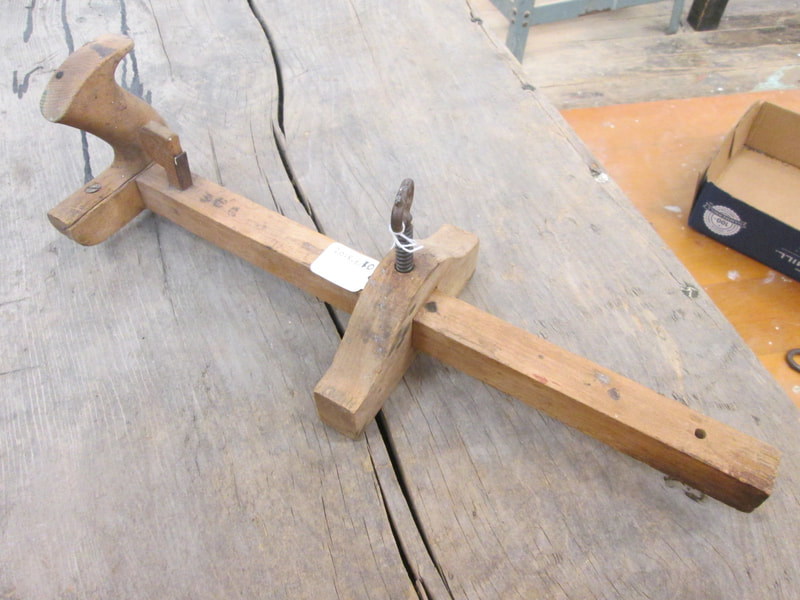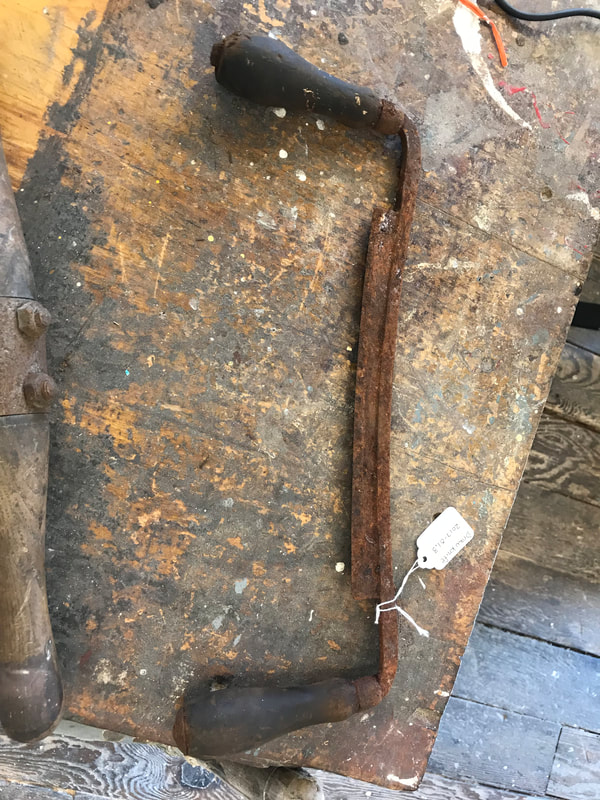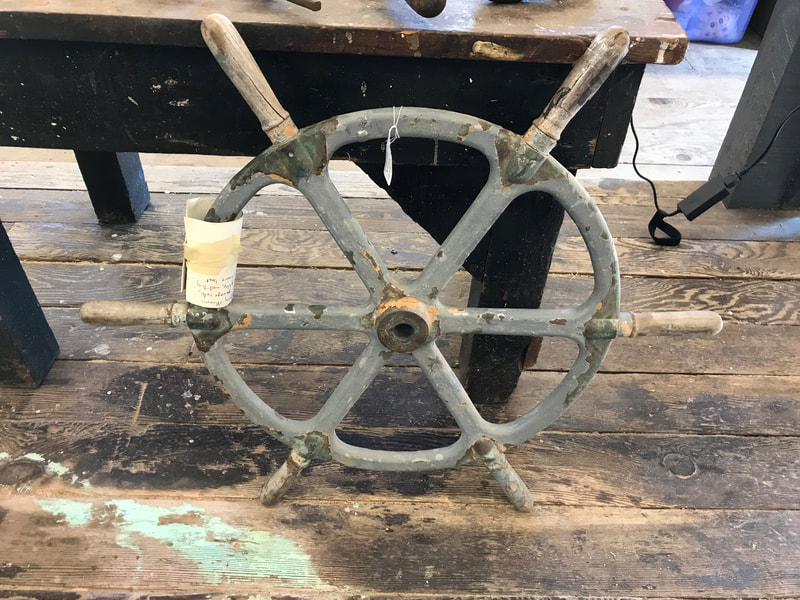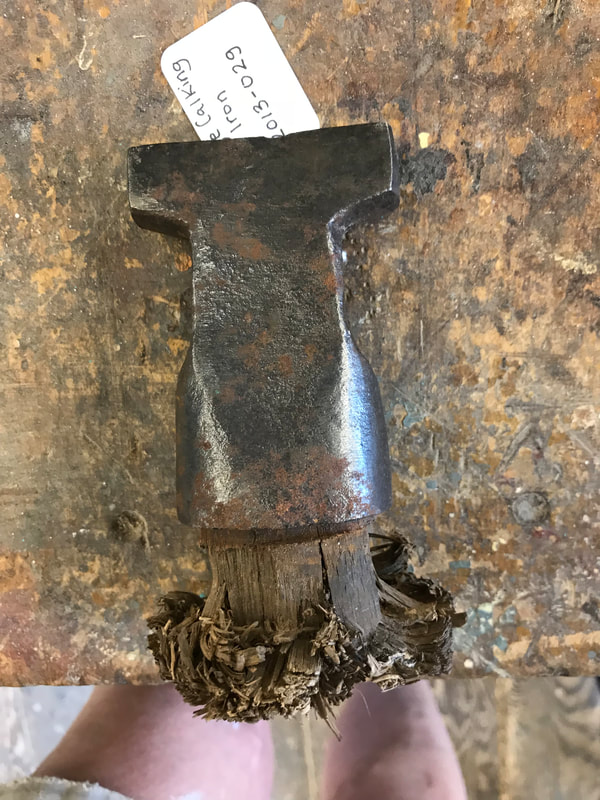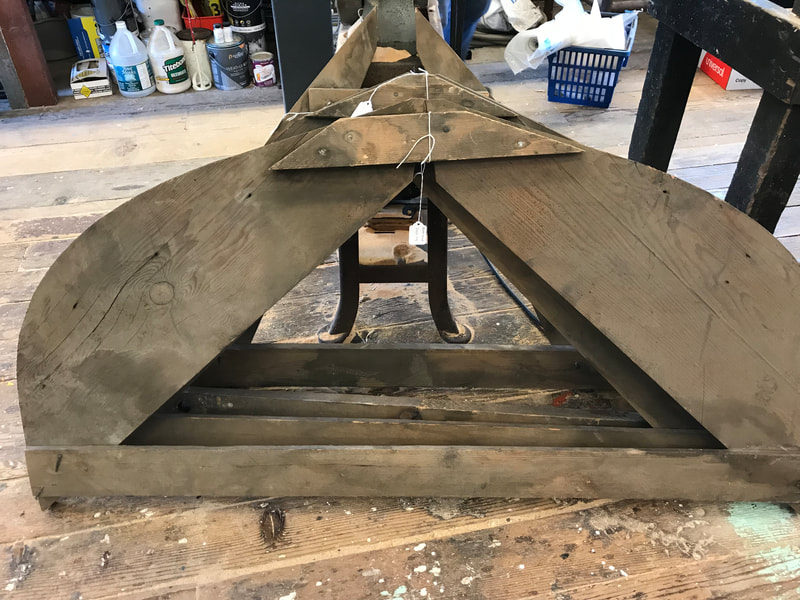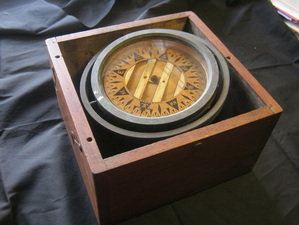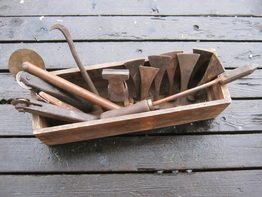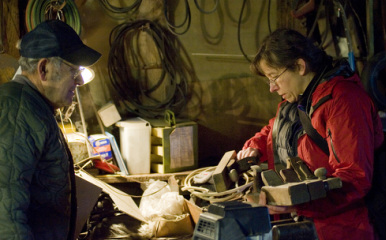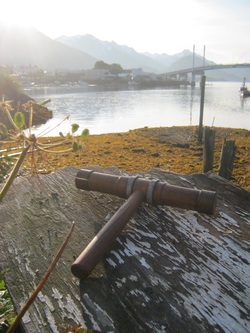Donations to the SMHS Maritime Collections
We recently installed a display in City Hall, in a case in the lobby. Check it out!
Object Demonstrations
|
Antique Rotary Fog Horn
Donated by Valorie & Connor Nelson |
Various Planes owned by Robert Modrell
Donated by John Modrell |
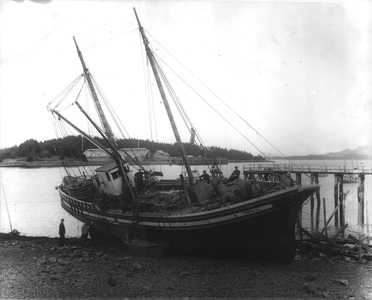
The Tom and Al
Lynne Chassin donated a print of E. W. Merrill's photograph of the Tom and Al, a halibut schooner, on the beach at what is now Katlian Street. This print was one made from the negatives of Sheldon Jackson College a number of years ago.
The photo is from some time after 1907, which was when the radio towers visible in the background were constructed. The Tom & Al was built by the (Thomas J.) King and (Albert M.) Winge shipbuilding company in Seattle in 1900, as the Ragnhild. (In 1914, the yard built the King and Winge, the halibut schooner involved in rescuing the survivors of the Karluk expedition, which sank working as a crabber in the Bering Sea in 1994.)
SMHS had the image scanned and is now sharing it at our website. There is lots of fun detail, from the fishing gear, to the natty headgear of the day. Thanks Lynne, for your donation!
Lynne Chassin donated a print of E. W. Merrill's photograph of the Tom and Al, a halibut schooner, on the beach at what is now Katlian Street. This print was one made from the negatives of Sheldon Jackson College a number of years ago.
The photo is from some time after 1907, which was when the radio towers visible in the background were constructed. The Tom & Al was built by the (Thomas J.) King and (Albert M.) Winge shipbuilding company in Seattle in 1900, as the Ragnhild. (In 1914, the yard built the King and Winge, the halibut schooner involved in rescuing the survivors of the Karluk expedition, which sank working as a crabber in the Bering Sea in 1994.)
SMHS had the image scanned and is now sharing it at our website. There is lots of fun detail, from the fishing gear, to the natty headgear of the day. Thanks Lynne, for your donation!
From the Osbakken FamilyWillis Osbakken has generously donated two items from his father John’s collection, and SMHS is excited to add them to our collection, which will eventually be part of our hands-on collection in the planned boathouse collection area.
John Osbakken came to the U.S. from Norway as an apprentice ship’s carpenter aboard the Balclutha, which is now the centerpiece of the San Francisco Maritime National Historic Park. In Sitka, Willis’s father had various enterprises, including a liquor store and the tender Point Reyes; he also built skiffs and repaired fishing boats at his partner Louis Johansen’s boat shop near Goddard, and would do work on boats in the harbor. Willis tells us that his father could size up the piece he needed, go to his shop (an addition on the back of the Osbakken house, which is now the Sitka Rose Gallery) and make the piece as a first-time perfect fit. |
From the Osbakken collection: A portable boat compass, brand name Dirigo (“I lead” in Latin). This compass is made to swing freely and stay level in a moving boat. It may have had a wooden lid at one time.
The second item is a hand-made wooden box of caulking irons, an old soldering iron, and several rollers for rolling caulking into the seam between boat planks. The rollers would have been used on smaller boats. Caulking irons are used to drive in and firm cotton or oakum into the seam between two planks on a boat. Different widths are needed for different widths of seams. The irons are hit with a caulking mallet, like the piece featured in our fall newsletter, of likely similar vintage, that was donated by Randall Rodgers. SMHS is extremely grateful for these beautiful examples of our maritime history, gifted by Willis Osbakken, who we interviewed this past November. A radio edit of the interview will be made available for broadcast to KCAW soon. ~ |
Collection items will eventually be on public display in the Japonski Island Boathouse.
Have items to contribute? Contact SMHS at [email protected]
Have items to contribute? Contact SMHS at [email protected]
